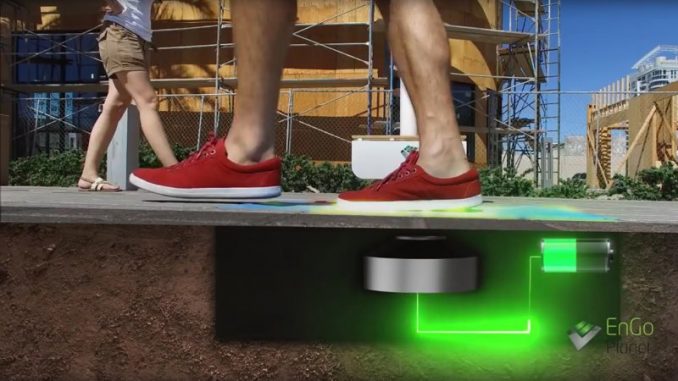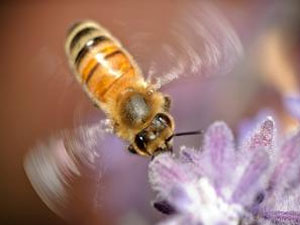《Nature》目录要览:2009-11-05出版
时间:2009-11-08 阅读: 我要评论:
《Nature》目录要览:2009-11-05出版
封面故事:细菌也知道“风险对冲”
Experimental evolution of bet hedging
在自然界,表现型之间的随机切换(“风险对冲”)是生物在变幻无常的环境中求生存
的常见现象。对暴露于一个与脊椎动物免疫系统等环境有相似性的波动体系中的“荧光
假单孢菌”所做的一项研究,实时显示了这种行为何以能够发生。本期封面所示为一个
“荧光假单孢菌”菌种的菌落,这个菌种已形成了在不同菌落类型之间随机切换的能
力。这种“风险对冲”策略使它们能够在一个不断变化、以对不同菌落有利的人工环境
中存活。“风险对冲”在实验室中的形成以及其中所涉及突变的识别,反映了动态环境
是怎样推动这种“风险对冲”行为之形成的。(Letter p. 90)照片提供:Hubertus
J.E. Beaumont。
动物可能并不懂得利他(The non-human factor)
Cooperation between non-kin in animal societies
自从Robert Trivers关于“互惠利他行为”(reciprocal altruism)的奠基性论文于
1971年发表以来,有关互惠及“囚徒困境”资源分享游戏的模型,一直是解释不相关个
体之间合作行为的主导性理论框架。然而,几乎没有证据证明,在自然条件下,除人以
外的动物通常会交换资源或服务。在一篇Review文章中,Tim Clutton-Brock对在非人
动物自然种群中的“互惠利他行为”进行了分析。他的结论是,这方面的证据很薄弱,
而且非亲个体之间明显合作的很多例子很可能是互惠互利(mutualism)或操纵
(manipulation),而非利他。(Review p. 51)
最年轻中子星的大气组成(A neutron star in its youth)
A neutron star with a carbon atmosphere in the Cassiopeia A supernova
remnant
超新星爆炸留下的热中子星被认为有一个薄的大气层,但尽管人们进行了大量搜索,此
前观测工作仍未能证实一颗孤立的中子星的大气组成。现在,Wynn Ho和Craig Heinke
通过分析由钱德拉观测卫星2004年对“仙后座A”超新星残迹中心的致密X-射线源所做
观测结果的存档数据,填补了这一空白。“仙后座A”中子星的光谱与预测出的碳大气
层的光谱相对应,而且该光谱还表明,在这颗中子星的表层有核燃烧现象。该中子星的
年龄约为300年,是已知最年轻的中子星。(Letter p. 71)
新型量子气体显微镜(Inside a quantum gas)
A quantum gas microscope for detecting single atoms in a Hubbard-regime
optical lattice
一种能够在有关量子体系研究的微观方法和宏观方法之间架起桥梁的新型量子气体显微
镜已研制成功。它利用高分辨率光学成像来探测束缚在一个由全息方式生成的光学晶格
中的单个原子。这种潜力通过束缚在一个光学晶格中、原子之间的间距只有640纳米的
单个铷原子图像的生成得到了演示。该方法应能有助于对凝聚态物质体系的量子模拟,
并且在基于超冷原子的大型量子信息系统的寻址和读出中可能会找到用武之地。
(Letter p. 74)
可同时操控光振荡和机械振荡的“光机晶体”器件(Light and sound)
Optomechanical crystals
在一种光子晶体中,基底媒介折射率的周期性变化被用来操纵光的性质,而在一种声子
晶体中,受这种操控的则是机械振荡。现在,Eichenfield等人构建了一种基于硅芯片
的器件,该器件含有一种将两种性质结合在一起的工程材料。在由此产生的“光机晶
体”中,光子与声子之间的强耦合使得在一个小空间中同时控制光振荡和机械振荡成为
可能,从而导致一种增强的光-物质相互作用。利用光机晶体做成的器件的可能应用包
括光子设备和电子设备中的信号处理,或用作微小物质(如生物分子)具有高度空间分
辨率的灵敏探测器。(Letter p. 78)
利用胶体研究玻璃脆性(Glass fragility in colloids)
Soft colloids make strong glasses
玻璃可分成脆玻璃或硬玻璃,分类的依据是,在接近玻璃相变温度时,看它们的弛豫时
间是否明显依赖于温度。此前,在分子液体中对这种行为进行研究以及了解该行为来自
哪里一直有困难。现在,Mattsson等人发现,含有可变形颗粒的胶体也能表现出丰富的
这种行为:以前它们一直被认为只能生成脆玻璃。这些胶体的脆性依赖于颗粒的弹性,
越弱的颗粒会导致越硬的行为。因为胶体容易通过成像和其他方法研究,所以这个模型
体系可能有助于破解玻璃脆性之谜。(Letter p. 83; News & Views)
评估大陆地震风险的常见方法可能不可靠(Aftershock or small quake?)
Long aftershock sequences within continents and implications for earthquake
hazard assessment
对大陆内的地震风险进行评估在很大程度上依赖于这样一个假设:历史记录中小地震的
地点反映了将会引起未来大地震的连续变形。然而,这一假设正在开始受到怀疑。2008
年5月的汶川地震表明,最近有低度地震活动的断层并非不会发生大地震。现在,Seth
Stein 和Mian Liu提出,很多最近的板块内地震很可能是数百年前发生的大地震的余
震,所以并不表示未来大地震的地点。Stein 和 Liu提出的一个简单模型预测,余震序
列的持续时间与断层加载速率成反比变化。因此,将大陆地震当作稳定态地震活动的常
见做法,可能会高估当前活跃地区的地震风险、低估其他地区的地震风险。(Letter
p. 87; News & Views)
T-细胞在自体免疫中的作用(T cells in autoimmunity)
Effector T cell interactions with meningeal vascular structures in nascent
autoimmune CNS lesions
用实验性自体免疫脑脊髓炎(多发性硬化的一个模型)对大鼠所做的一项双光子荧光显
微镜研究表明,触发自体免疫疾病的血液T-细胞先是直接附着在脊髓脑膜脉管内表面
上,然后在对其内表面进行扫描,有时还会逆血流方向爬行。一旦穿过血-脑障碍,这
些T-细胞便会与表现抗原的吞噬细胞结合,后者又会刺激它们进一步的分化和组织渗
透。与T-细胞的这些相互作用中所涉及的结构,有可能成为自体免疫脑病治疗方法的潜
在候选目标。(Letter p. 94; News & Views)
HMGB蛋白的“哨兵”角色(HMGB protein sentinels)
HMGB proteins function as universal sentinels for nucleic-acid-mediated
innate immune responses
这项研究表明,染色体HMGB (high mobility group box)蛋白HMGB1、 HMGB2 和HMGB3
是所有由核酸受体调控的先天免疫反应的激发所必不可少的。HMGB蛋白与所测试的所有
产生免疫反应的核酸相结合(不管它们被认为是Toll样受体的配体还是细胞溶质配
体),说明它们可能有一个生理作用,即充当细胞内核酸的普适性“哨兵”。(
Letter p. 99)
TBK1可能是一个癌症治疗目标(Targeting KRAS cancers)
Requirement for NF- B signalling in a mouse model of lung adenocarcinoma /
Systematic RNA interference reveals that oncogenic KRAS-driven cancers
require TBK1
RAS家族基因的突变在大约20%的人类癌症中是预先设置好的,这使得RAS蛋白成为癌症
治疗的首选潜在目标。以RAS蛋白直接作为目标的做法迄今一直效果不好,但本期
Nature上发表的两篇论文让我们看到,在RAS下游的一个信号通道中的其他目标比较有
希望。Barbie等人利用合成致死性RNAi筛查发现,TBK1是NF-κB信号通道中的一种激
酶,它是被KRAS-改变的细胞存活所必不可少的。TBK1诱导反凋亡信号,可能是一个癌
症治疗目标。在关于由Kras突变和p53丧失所造成的肺癌的一个精巧的小鼠模型中,
Meylan等人发现NF-κB信号作用是被这两种改变的协同作用激发的,是肿瘤初发和维持
所必需的。(Letters pp. 104, 108; News & Views)
天青蛋白还原电位可大幅度调整(‘Super’ metalloproteins)
Rationally tuning the reduction potential of a single cupredoxin beyond the
natural range
很多金属蛋白(在它们活性点上含有金属原子的蛋白)是涉及电子转移的生物反应的关
键。现在,Marshall等人发现,将一个铜氧还蛋白分子(被称为天青蛋白的砷酸盐还原
酶)的还原电位调整到远远超过自然范围是有可能的。他们是通过改变金属结合点近端
或远端的关键氨基酸来做到这一点的。希望从这项研究工作以及未来研究中获得的经
验,可用来设计非天然光合作用中心或用于能量转换的人工燃料电池催化剂。(Letter
p. 113)
----------------------
NEWS AND VIEWS
----------------------
Immunology: In the beginning pp41-42
Immune cells cross the inflamed blood-brain barrier. But it's unclear how
brain inflammation begins before immune-cell entry. Studies of a model of
multiple sclerosis start to solve this 'chicken and egg' conundrum.
Richard M. Ransohoff
doi:10.1038/462041a
http://www.nature.com/nature/journal/v462/n7269/full/462041a.html
Earth science: Lasting earthquake legacy pp42-43
Earthquakes occur within continental tectonic plates as well as at plate
boundaries. Do clusters of such mid-plate events constitute zones of
continuing hazard, or are they aftershocks of long-past earthquakes?
Tom Parsons
doi:10.1038/462042a
http://www.nature.com/nature/journal/v462/n7269/full/462042a.html
Cancer: A tumour gene's fatal flaws pp44-45
Mutations in RAS genes are common in human tumours, but RAS has proved
impossible to target with drugs. Its associated NF-[kappa]B signalling
pathway, however, may turn out to be this tumour gene's Achilles heel.
Julian Downward
doi:10.1038/462044a
http://www.nature.com/nature/journal/v462/n7269/full/462044a.html
Materials science: Soft is strong pp45-46
The mechanisms that govern the rate at which glasses soften on heating
have long been a mystery. The finding that colloids can mimic the full
range of glass-softening behaviours offers a fresh take on the problem.
C. Austen Angell and Kazuhide Ueno
doi:10.1038/462045a
http://www.nature.com/nature/journal/v462/n7269/full/462045a.html
Genetics: Crossover control in two steps pp46-47
During meiotic cell division, chromosome pairs exchange genetic material
in a tightly controlled crossover process. Higher-order chromosome
structure may regulate this genetic reshuffling at two distinct stages of
meiosis.
Yonatan B. Tzur and Monica P. Colaiacovo
doi:10.1038/462046a
http://www.nature.com/nature/journal/v462/n7269/full/462046a.html
140th Birthday miscellany pp48-49
With this issue, it is 140 years since Nature first appeared on 4 November
1869. To mark the anniversary, these two pages offer a miscellany from that
issue and from 1889, 1909, 1929, 1949, 1969 and 1989.
doi:10.1038/462048a
http://www.nature.com/nature/journal/v462/n7269/full/462048a.html
----------------------
REVIEW
----------------------
Cooperation between non-kin in animal societies pp51-57
Tim Clutton-Brock
doi:10.1038/nature08366
Abstract:
http://www.nature.com/nature/journal/v462/n7269/abs/nature08366.html
Article:
http://www.nature.com/nature/journal/v462/n7269/full/nature08366.html
----------------------
ARTICLES
----------------------
An oestrogen-receptor-[agr]-bound human chromatin interactome pp58-64
Many transcription factors bind to regulatory DNA elements that are distant
from gene promoters. These distal binding sites are thought to regulate
transcription through long-range chromatin interactions, but, until now, the
impact of chromatin interactions on transcription regulation has not been
investigated in a genome-wide manner. A new strategy - chromatin
interaction analysis by paired-end tag sequencing - is now described
for the de novo detection of global chromatin interactions.
Melissa J. Fullwood et al.
doi:10.1038/nature08497
Abstract:
http://www.nature.com/nature/journal/v462/n7269/abs/nature08497.html
Article:
http://www.nature.com/nature/journal/v462/n7269/full/nature08497.html
Combinatorial binding predicts spatio-temporal cis-regulatory activity
pp65-70
The precise patterns of gene expression required for development are
primarily
controlled by transcription factors binding to cis-regulatory modules;
however,
decoding this regulatory landscape remains challenging. Here, a novel
approach
is used to predict spatio-temporal cis-regulatory activity based only on in
vivo transcription factor binding and enhancer activity data, and is then
applied to Drosophila mesoderm development.
Robert P. Zinzen et al.
doi:10.1038/nature08531
Abstract:
http://www.nature.com/nature/journal/v462/n7269/abs/nature08531.html
Article:
http://www.nature.com/nature/journal/v462/n7269/full/nature08531.html
----------------------
LETTERS
----------------------
A neutron star with a carbon atmosphere in the Cassiopeia A supernova
remnant
pp71-73
The surface of hot neutron stars is known to be covered by a thin atmosphere
but observations have been unable to confirm the atmospheric composition of
isolated neutron stars. An analysis of archival observations of the compact
X-ray source in the centre of the Cassiopeia A supernova remnant now reveals
that an extremely young carbon-atmosphere neutron star (with low magnetic
field) produces a good fit to the spectrum.
Wynn C. G. Ho and Craig O. Heinke
doi:10.1038/nature08525
Abstract:
http://www.nature.com/nature/journal/v462/n7269/abs/nature08525.html
Article:
http://www.nature.com/nature/journal/v462/n7269/full/nature08525.html
A quantum gas microscope for detecting single atoms in a Hubbard-regime
optical
lattice pp74-77
There are two different approaches for creating complex atomic many-body
quantum systems - the macroscopic and the microscopic - which have, until
now, been fairly disconnected. A quantum gas 'microscope' is now
demonstrated
that bridges the two approaches and can be used to detect single atoms held
in
a Hubbard-regime optical lattice. This quantum gas microscope may enable
addressing and read-out of large-scale quantum information systems based
on ultracold atoms.
Waseem S. Bakr et al.
doi:10.1038/nature08482
Abstract:
http://www.nature.com/nature/journal/v462/n7269/abs/nature08482.html
Article:
http://www.nature.com/nature/journal/v462/n7269/full/nature08482.html
Optomechanical crystals pp78-82
In a photonic crystal, the periodicity of the host medium is used to
manipulate
the properties of light, whereas in a phononic crystal it is mechanical
vibrations that are subject to such control. Here, a structure that acts as
both a photonic and phononic crystal - an 'optomechanical' crystal - is
described; the strong coupling between photons and phonons realized in this
structure should find application in a host of sensing and communication
technologies.
Matt Eichenfield et al.
doi:10.1038/nature08524
Abstract:
http://www.nature.com/nature/journal/v462/n7269/abs/nature08524.html
Article:
http://www.nature.com/nature/journal/v462/n7269/full/nature08524.html
Soft colloids make strong glasses pp83-86
Glasses can be divided into fragile or strong, depending on whether they
show
a marked dependence of their relaxation time with temperature when
approaching
the glass transition. Although colloidal particles have previously been
found
to produce only fragile glasses, here it is shown that deformable colloidal
particles exhibit the same variation in fragility as that observed in
molecular
liquids. Colloids are easy to study, so this model should provide new
insight
into glass formation in molecular systems.
Johan Mattsson et al.
doi:10.1038/nature08457
Abstract:
http://www.nature.com/nature/journal/v462/n7269/abs/nature08457.html
Article:
http://www.nature.com/nature/journal/v462/n7269/full/nature08457.html
Long aftershock sequences within continents and implications for earthquake
hazard assessment pp87-89
Within plate interiors, assessments of earthquake hazards rely heavily on
the
assumption that the locations of the few recorded small earthquakes reflect
continuing deformation that will cause future large earthquakes. Here,
however,
a simple model shows that many of these recent earthquakes are probably
aftershocks of large earthquakes that occurred hundreds of years ago,
causing
earthquake prediction to overestimate hazard in presently active areas, and
underestimate it elsewhere.
Seth Stein and Mian Liu
doi:10.1038/nature08502
Abstract:
http://www.nature.com/nature/journal/v462/n7269/abs/nature08502.html
Article:
http://www.nature.com/nature/journal/v462/n7269/full/nature08502.html
Experimental evolution of bet hedging pp90-93
In the face of fluctuating environmental conditions, bet hedging -
stochastic
switching between phenotypes - can be an advantageous strategy. But how does
bet
hedging evolve? The de novo evolution of bet hedging in experimental
bacterial
populations subjected to an environment that continually favoured new
phenotypic
states is now reported. The findings suggest that risk-spreading strategies
may
have been among the earliest evolutionary solutions to life in fluctuating
environments.
Hubertus J. E. Beaumont et al.
doi:10.1038/nature08504
Abstract:
http://www.nature.com/nature/journal/v462/n7269/abs/nature08504.html
Article:
http://www.nature.com/nature/journal/v462/n7269/full/nature08504.html
Effector T cell interactions with meningeal vascular structures in nascent
autoimmune CNS lesions pp94-98
The tissues of the central nervous system are shielded from the blood
circulation
by specialized vessels, impermeable to cells and most circulating
macromolecules.
Despite this, central nervous system tissues are subject to immune
surveillance
and are vulnerable to autoimmune attack. Here, intravital two-photon imaging
is
used to observe, in real-time, the interactive processes between effector T
cells
and cerebral structures leading to an experimental rat model of autoimmune
encephalitis.
Ingo Bartholomaus et al.
doi:10.1038/nature08478
Abstract:
http://www.nature.com/nature/journal/v462/n7269/abs/nature08478.html
Article:
http://www.nature.com/nature/journal/v462/n7269/full/nature08478.html
HMGB proteins function as universal sentinels for nucleic-acid-mediated
innate
immune responses pp99-103
Activation of innate immune responses by nucleic acids is crucial to
protective
and pathological immunities. This activation is known to be mediated by
transmembrane
Toll-like receptors and cytosolic receptors; however, it remains unclear
whether
a mechanism exists that integrates these two nucleic-acid-sensing systems.
High-mobility group box (HMGB) proteins 1, 2 and 3 are now shown to function
as
universal sentinels for nucleic-acid-mediated innate immune responses.
Hideyuki Yanai et al.
doi:10.1038/nature08512
Abstract:
http://www.nature.com/nature/journal/v462/n7269/abs/nature08512.html
Article:
http://www.nature.com/nature/journal/v462/n7269/full/nature08512.html
Requirement for NF-[kgr]B signalling in a mouse model of lung
adenocarcinoma
pp104-107
NF-[kappa]B transcription factors have been implicated in cellular
transformation
and tumorigenesis, but despite extensive biochemical characterization of
NF-[kappa]B signalling, its requirement in tumour development is not
completely
understood. Here, the NF-[kappa]B pathway is shown to be required for the
development of tumours in a mouse model of lung adenocarcinoma in a
p53-status-
dependent manner, providing support for the development of NF-[kappa]B
inhibitory drugs as targeted therapies.
Etienne Meylan et al.
doi:10.1038/nature08462
Abstract:
http://www.nature.com/nature/journal/v462/n7269/abs/nature08462.html
Article:
http://www.nature.com/nature/journal/v462/n7269/full/nature08462.html
Systematic RNA interference reveals that oncogenic KRAS-driven cancers
require
TBK1 pp108-112
KRAS is a proto-oncogene that is mutated in a wide variety of human cancers.
Although this makes KRAS an obvious candidate for the development of
targeted
therapies, it has so far remained refractory to this approach. Systematic
RNA
interference is now used to detect synthetic lethal partners of oncogenic
KRAS,
revealing that TBK1 and NF-[kappa]B signalling are essential in KRAS mutant
tumours. This may provide an alternative approach for targeting KRAS
therapeutically.
David A. Barbie et al.
doi:10.1038/nature08460
Abstract:
http://www.nature.com/nature/journal/v462/n7269/abs/nature08460.html
Article:
http://www.nature.com/nature/journal/v462/n7269/full/nature08460.html
Rationally tuning the reduction potential of a single cupredoxin beyond the
natural range pp113-116
Redox processes, which are at the heart of numerous functions in chemistry
and
biology, are accomplished in nature by only a limited number of redox-active
agents. A long-standing issue is how redox potentials are fine-tuned over a
broad range with little change to the redox-active site or electron-transfer
properties. Here it is shown that two important secondary coordination
sphere
interactions, hydrophobicity and hydrogen-bonding, are capable of tuning the
reduction potential of a single cupredoxin over a 700 mV range.
Nicholas M. Marshall et al.
doi:10.1038/nature08551
Abstract:
http://www.nature.com/nature/journal/v462/n7269/abs/nature08551.html
Article:
http://www.nature.com/nature/journal/v462/n7269/full/nature08551.html
Structural basis of inter-protein electron transfer for nitrite reduction in
denitrification pp117-120
Anthropogenic addition of bio-available nitrogen to the global nitrogen
cycle
has led to a host of environmental problems. Copper-containing nitrite
reductase
(CuNIR) is a key enzyme in the process of denitrification by catalysing the
one-electron reduction of nitrite to nitric oxide, but details of the
mechanism
of the electron-transfer reaction are still unknown. Here, the
high-resolution
crystal structure of the electron-transfer complex for CuNIR is presented
and analysed.
Masaki Nojiri et al.
doi:10.1038/nature08507
Abstract:
http://www.nature.com/nature/journal/v462/n7269/abs/nature08507.html
Article:
http://www.nature.com/nature/journal/v462/n7269/full/nature08507.html
----------------------
FUTURES
----------------------
Clear proof p126
The final demonstration of the failure of cold fusion.
Jeff Hecht
doi:10.1038/462126a
http://www.nature.com/nature/journal/v462/n7269/full/462126a.html
Experimental evolution of bet hedging
在自然界,表现型之间的随机切换(“风险对冲”)是生物在变幻无常的环境中求生存
的常见现象。对暴露于一个与脊椎动物免疫系统等环境有相似性的波动体系中的“荧光
假单孢菌”所做的一项研究,实时显示了这种行为何以能够发生。本期封面所示为一个
“荧光假单孢菌”菌种的菌落,这个菌种已形成了在不同菌落类型之间随机切换的能
力。这种“风险对冲”策略使它们能够在一个不断变化、以对不同菌落有利的人工环境
中存活。“风险对冲”在实验室中的形成以及其中所涉及突变的识别,反映了动态环境
是怎样推动这种“风险对冲”行为之形成的。(Letter p. 90)照片提供:Hubertus
J.E. Beaumont。
动物可能并不懂得利他(The non-human factor)
Cooperation between non-kin in animal societies
自从Robert Trivers关于“互惠利他行为”(reciprocal altruism)的奠基性论文于
1971年发表以来,有关互惠及“囚徒困境”资源分享游戏的模型,一直是解释不相关个
体之间合作行为的主导性理论框架。然而,几乎没有证据证明,在自然条件下,除人以
外的动物通常会交换资源或服务。在一篇Review文章中,Tim Clutton-Brock对在非人
动物自然种群中的“互惠利他行为”进行了分析。他的结论是,这方面的证据很薄弱,
而且非亲个体之间明显合作的很多例子很可能是互惠互利(mutualism)或操纵
(manipulation),而非利他。(Review p. 51)
最年轻中子星的大气组成(A neutron star in its youth)
A neutron star with a carbon atmosphere in the Cassiopeia A supernova
remnant
超新星爆炸留下的热中子星被认为有一个薄的大气层,但尽管人们进行了大量搜索,此
前观测工作仍未能证实一颗孤立的中子星的大气组成。现在,Wynn Ho和Craig Heinke
通过分析由钱德拉观测卫星2004年对“仙后座A”超新星残迹中心的致密X-射线源所做
观测结果的存档数据,填补了这一空白。“仙后座A”中子星的光谱与预测出的碳大气
层的光谱相对应,而且该光谱还表明,在这颗中子星的表层有核燃烧现象。该中子星的
年龄约为300年,是已知最年轻的中子星。(Letter p. 71)
新型量子气体显微镜(Inside a quantum gas)
A quantum gas microscope for detecting single atoms in a Hubbard-regime
optical lattice
一种能够在有关量子体系研究的微观方法和宏观方法之间架起桥梁的新型量子气体显微
镜已研制成功。它利用高分辨率光学成像来探测束缚在一个由全息方式生成的光学晶格
中的单个原子。这种潜力通过束缚在一个光学晶格中、原子之间的间距只有640纳米的
单个铷原子图像的生成得到了演示。该方法应能有助于对凝聚态物质体系的量子模拟,
并且在基于超冷原子的大型量子信息系统的寻址和读出中可能会找到用武之地。
(Letter p. 74)
可同时操控光振荡和机械振荡的“光机晶体”器件(Light and sound)
Optomechanical crystals
在一种光子晶体中,基底媒介折射率的周期性变化被用来操纵光的性质,而在一种声子
晶体中,受这种操控的则是机械振荡。现在,Eichenfield等人构建了一种基于硅芯片
的器件,该器件含有一种将两种性质结合在一起的工程材料。在由此产生的“光机晶
体”中,光子与声子之间的强耦合使得在一个小空间中同时控制光振荡和机械振荡成为
可能,从而导致一种增强的光-物质相互作用。利用光机晶体做成的器件的可能应用包
括光子设备和电子设备中的信号处理,或用作微小物质(如生物分子)具有高度空间分
辨率的灵敏探测器。(Letter p. 78)
利用胶体研究玻璃脆性(Glass fragility in colloids)
Soft colloids make strong glasses
玻璃可分成脆玻璃或硬玻璃,分类的依据是,在接近玻璃相变温度时,看它们的弛豫时
间是否明显依赖于温度。此前,在分子液体中对这种行为进行研究以及了解该行为来自
哪里一直有困难。现在,Mattsson等人发现,含有可变形颗粒的胶体也能表现出丰富的
这种行为:以前它们一直被认为只能生成脆玻璃。这些胶体的脆性依赖于颗粒的弹性,
越弱的颗粒会导致越硬的行为。因为胶体容易通过成像和其他方法研究,所以这个模型
体系可能有助于破解玻璃脆性之谜。(Letter p. 83; News & Views)
评估大陆地震风险的常见方法可能不可靠(Aftershock or small quake?)
Long aftershock sequences within continents and implications for earthquake
hazard assessment
对大陆内的地震风险进行评估在很大程度上依赖于这样一个假设:历史记录中小地震的
地点反映了将会引起未来大地震的连续变形。然而,这一假设正在开始受到怀疑。2008
年5月的汶川地震表明,最近有低度地震活动的断层并非不会发生大地震。现在,Seth
Stein 和Mian Liu提出,很多最近的板块内地震很可能是数百年前发生的大地震的余
震,所以并不表示未来大地震的地点。Stein 和 Liu提出的一个简单模型预测,余震序
列的持续时间与断层加载速率成反比变化。因此,将大陆地震当作稳定态地震活动的常
见做法,可能会高估当前活跃地区的地震风险、低估其他地区的地震风险。(Letter
p. 87; News & Views)
T-细胞在自体免疫中的作用(T cells in autoimmunity)
Effector T cell interactions with meningeal vascular structures in nascent
autoimmune CNS lesions
用实验性自体免疫脑脊髓炎(多发性硬化的一个模型)对大鼠所做的一项双光子荧光显
微镜研究表明,触发自体免疫疾病的血液T-细胞先是直接附着在脊髓脑膜脉管内表面
上,然后在对其内表面进行扫描,有时还会逆血流方向爬行。一旦穿过血-脑障碍,这
些T-细胞便会与表现抗原的吞噬细胞结合,后者又会刺激它们进一步的分化和组织渗
透。与T-细胞的这些相互作用中所涉及的结构,有可能成为自体免疫脑病治疗方法的潜
在候选目标。(Letter p. 94; News & Views)
HMGB蛋白的“哨兵”角色(HMGB protein sentinels)
HMGB proteins function as universal sentinels for nucleic-acid-mediated
innate immune responses
这项研究表明,染色体HMGB (high mobility group box)蛋白HMGB1、 HMGB2 和HMGB3
是所有由核酸受体调控的先天免疫反应的激发所必不可少的。HMGB蛋白与所测试的所有
产生免疫反应的核酸相结合(不管它们被认为是Toll样受体的配体还是细胞溶质配
体),说明它们可能有一个生理作用,即充当细胞内核酸的普适性“哨兵”。(
Letter p. 99)
TBK1可能是一个癌症治疗目标(Targeting KRAS cancers)
Requirement for NF- B signalling in a mouse model of lung adenocarcinoma /
Systematic RNA interference reveals that oncogenic KRAS-driven cancers
require TBK1
RAS家族基因的突变在大约20%的人类癌症中是预先设置好的,这使得RAS蛋白成为癌症
治疗的首选潜在目标。以RAS蛋白直接作为目标的做法迄今一直效果不好,但本期
Nature上发表的两篇论文让我们看到,在RAS下游的一个信号通道中的其他目标比较有
希望。Barbie等人利用合成致死性RNAi筛查发现,TBK1是NF-κB信号通道中的一种激
酶,它是被KRAS-改变的细胞存活所必不可少的。TBK1诱导反凋亡信号,可能是一个癌
症治疗目标。在关于由Kras突变和p53丧失所造成的肺癌的一个精巧的小鼠模型中,
Meylan等人发现NF-κB信号作用是被这两种改变的协同作用激发的,是肿瘤初发和维持
所必需的。(Letters pp. 104, 108; News & Views)
天青蛋白还原电位可大幅度调整(‘Super’ metalloproteins)
Rationally tuning the reduction potential of a single cupredoxin beyond the
natural range
很多金属蛋白(在它们活性点上含有金属原子的蛋白)是涉及电子转移的生物反应的关
键。现在,Marshall等人发现,将一个铜氧还蛋白分子(被称为天青蛋白的砷酸盐还原
酶)的还原电位调整到远远超过自然范围是有可能的。他们是通过改变金属结合点近端
或远端的关键氨基酸来做到这一点的。希望从这项研究工作以及未来研究中获得的经
验,可用来设计非天然光合作用中心或用于能量转换的人工燃料电池催化剂。(Letter
p. 113)
----------------------
NEWS AND VIEWS
----------------------
Immunology: In the beginning pp41-42
Immune cells cross the inflamed blood-brain barrier. But it's unclear how
brain inflammation begins before immune-cell entry. Studies of a model of
multiple sclerosis start to solve this 'chicken and egg' conundrum.
Richard M. Ransohoff
doi:10.1038/462041a
http://www.nature.com/nature/journal/v462/n7269/full/462041a.html
Earth science: Lasting earthquake legacy pp42-43
Earthquakes occur within continental tectonic plates as well as at plate
boundaries. Do clusters of such mid-plate events constitute zones of
continuing hazard, or are they aftershocks of long-past earthquakes?
Tom Parsons
doi:10.1038/462042a
http://www.nature.com/nature/journal/v462/n7269/full/462042a.html
Cancer: A tumour gene's fatal flaws pp44-45
Mutations in RAS genes are common in human tumours, but RAS has proved
impossible to target with drugs. Its associated NF-[kappa]B signalling
pathway, however, may turn out to be this tumour gene's Achilles heel.
Julian Downward
doi:10.1038/462044a
http://www.nature.com/nature/journal/v462/n7269/full/462044a.html
Materials science: Soft is strong pp45-46
The mechanisms that govern the rate at which glasses soften on heating
have long been a mystery. The finding that colloids can mimic the full
range of glass-softening behaviours offers a fresh take on the problem.
C. Austen Angell and Kazuhide Ueno
doi:10.1038/462045a
http://www.nature.com/nature/journal/v462/n7269/full/462045a.html
Genetics: Crossover control in two steps pp46-47
During meiotic cell division, chromosome pairs exchange genetic material
in a tightly controlled crossover process. Higher-order chromosome
structure may regulate this genetic reshuffling at two distinct stages of
meiosis.
Yonatan B. Tzur and Monica P. Colaiacovo
doi:10.1038/462046a
http://www.nature.com/nature/journal/v462/n7269/full/462046a.html
140th Birthday miscellany pp48-49
With this issue, it is 140 years since Nature first appeared on 4 November
1869. To mark the anniversary, these two pages offer a miscellany from that
issue and from 1889, 1909, 1929, 1949, 1969 and 1989.
doi:10.1038/462048a
http://www.nature.com/nature/journal/v462/n7269/full/462048a.html
----------------------
REVIEW
----------------------
Cooperation between non-kin in animal societies pp51-57
Tim Clutton-Brock
doi:10.1038/nature08366
Abstract:
http://www.nature.com/nature/journal/v462/n7269/abs/nature08366.html
Article:
http://www.nature.com/nature/journal/v462/n7269/full/nature08366.html
----------------------
ARTICLES
----------------------
An oestrogen-receptor-[agr]-bound human chromatin interactome pp58-64
Many transcription factors bind to regulatory DNA elements that are distant
from gene promoters. These distal binding sites are thought to regulate
transcription through long-range chromatin interactions, but, until now, the
impact of chromatin interactions on transcription regulation has not been
investigated in a genome-wide manner. A new strategy - chromatin
interaction analysis by paired-end tag sequencing - is now described
for the de novo detection of global chromatin interactions.
Melissa J. Fullwood et al.
doi:10.1038/nature08497
Abstract:
http://www.nature.com/nature/journal/v462/n7269/abs/nature08497.html
Article:
http://www.nature.com/nature/journal/v462/n7269/full/nature08497.html
Combinatorial binding predicts spatio-temporal cis-regulatory activity
pp65-70
The precise patterns of gene expression required for development are
primarily
controlled by transcription factors binding to cis-regulatory modules;
however,
decoding this regulatory landscape remains challenging. Here, a novel
approach
is used to predict spatio-temporal cis-regulatory activity based only on in
vivo transcription factor binding and enhancer activity data, and is then
applied to Drosophila mesoderm development.
Robert P. Zinzen et al.
doi:10.1038/nature08531
Abstract:
http://www.nature.com/nature/journal/v462/n7269/abs/nature08531.html
Article:
http://www.nature.com/nature/journal/v462/n7269/full/nature08531.html
----------------------
LETTERS
----------------------
A neutron star with a carbon atmosphere in the Cassiopeia A supernova
remnant
pp71-73
The surface of hot neutron stars is known to be covered by a thin atmosphere
but observations have been unable to confirm the atmospheric composition of
isolated neutron stars. An analysis of archival observations of the compact
X-ray source in the centre of the Cassiopeia A supernova remnant now reveals
that an extremely young carbon-atmosphere neutron star (with low magnetic
field) produces a good fit to the spectrum.
Wynn C. G. Ho and Craig O. Heinke
doi:10.1038/nature08525
Abstract:
http://www.nature.com/nature/journal/v462/n7269/abs/nature08525.html
Article:
http://www.nature.com/nature/journal/v462/n7269/full/nature08525.html
A quantum gas microscope for detecting single atoms in a Hubbard-regime
optical
lattice pp74-77
There are two different approaches for creating complex atomic many-body
quantum systems - the macroscopic and the microscopic - which have, until
now, been fairly disconnected. A quantum gas 'microscope' is now
demonstrated
that bridges the two approaches and can be used to detect single atoms held
in
a Hubbard-regime optical lattice. This quantum gas microscope may enable
addressing and read-out of large-scale quantum information systems based
on ultracold atoms.
Waseem S. Bakr et al.
doi:10.1038/nature08482
Abstract:
http://www.nature.com/nature/journal/v462/n7269/abs/nature08482.html
Article:
http://www.nature.com/nature/journal/v462/n7269/full/nature08482.html
Optomechanical crystals pp78-82
In a photonic crystal, the periodicity of the host medium is used to
manipulate
the properties of light, whereas in a phononic crystal it is mechanical
vibrations that are subject to such control. Here, a structure that acts as
both a photonic and phononic crystal - an 'optomechanical' crystal - is
described; the strong coupling between photons and phonons realized in this
structure should find application in a host of sensing and communication
technologies.
Matt Eichenfield et al.
doi:10.1038/nature08524
Abstract:
http://www.nature.com/nature/journal/v462/n7269/abs/nature08524.html
Article:
http://www.nature.com/nature/journal/v462/n7269/full/nature08524.html
Soft colloids make strong glasses pp83-86
Glasses can be divided into fragile or strong, depending on whether they
show
a marked dependence of their relaxation time with temperature when
approaching
the glass transition. Although colloidal particles have previously been
found
to produce only fragile glasses, here it is shown that deformable colloidal
particles exhibit the same variation in fragility as that observed in
molecular
liquids. Colloids are easy to study, so this model should provide new
insight
into glass formation in molecular systems.
Johan Mattsson et al.
doi:10.1038/nature08457
Abstract:
http://www.nature.com/nature/journal/v462/n7269/abs/nature08457.html
Article:
http://www.nature.com/nature/journal/v462/n7269/full/nature08457.html
Long aftershock sequences within continents and implications for earthquake
hazard assessment pp87-89
Within plate interiors, assessments of earthquake hazards rely heavily on
the
assumption that the locations of the few recorded small earthquakes reflect
continuing deformation that will cause future large earthquakes. Here,
however,
a simple model shows that many of these recent earthquakes are probably
aftershocks of large earthquakes that occurred hundreds of years ago,
causing
earthquake prediction to overestimate hazard in presently active areas, and
underestimate it elsewhere.
Seth Stein and Mian Liu
doi:10.1038/nature08502
Abstract:
http://www.nature.com/nature/journal/v462/n7269/abs/nature08502.html
Article:
http://www.nature.com/nature/journal/v462/n7269/full/nature08502.html
Experimental evolution of bet hedging pp90-93
In the face of fluctuating environmental conditions, bet hedging -
stochastic
switching between phenotypes - can be an advantageous strategy. But how does
bet
hedging evolve? The de novo evolution of bet hedging in experimental
bacterial
populations subjected to an environment that continually favoured new
phenotypic
states is now reported. The findings suggest that risk-spreading strategies
may
have been among the earliest evolutionary solutions to life in fluctuating
environments.
Hubertus J. E. Beaumont et al.
doi:10.1038/nature08504
Abstract:
http://www.nature.com/nature/journal/v462/n7269/abs/nature08504.html
Article:
http://www.nature.com/nature/journal/v462/n7269/full/nature08504.html
Effector T cell interactions with meningeal vascular structures in nascent
autoimmune CNS lesions pp94-98
The tissues of the central nervous system are shielded from the blood
circulation
by specialized vessels, impermeable to cells and most circulating
macromolecules.
Despite this, central nervous system tissues are subject to immune
surveillance
and are vulnerable to autoimmune attack. Here, intravital two-photon imaging
is
used to observe, in real-time, the interactive processes between effector T
cells
and cerebral structures leading to an experimental rat model of autoimmune
encephalitis.
Ingo Bartholomaus et al.
doi:10.1038/nature08478
Abstract:
http://www.nature.com/nature/journal/v462/n7269/abs/nature08478.html
Article:
http://www.nature.com/nature/journal/v462/n7269/full/nature08478.html
HMGB proteins function as universal sentinels for nucleic-acid-mediated
innate
immune responses pp99-103
Activation of innate immune responses by nucleic acids is crucial to
protective
and pathological immunities. This activation is known to be mediated by
transmembrane
Toll-like receptors and cytosolic receptors; however, it remains unclear
whether
a mechanism exists that integrates these two nucleic-acid-sensing systems.
High-mobility group box (HMGB) proteins 1, 2 and 3 are now shown to function
as
universal sentinels for nucleic-acid-mediated innate immune responses.
Hideyuki Yanai et al.
doi:10.1038/nature08512
Abstract:
http://www.nature.com/nature/journal/v462/n7269/abs/nature08512.html
Article:
http://www.nature.com/nature/journal/v462/n7269/full/nature08512.html
Requirement for NF-[kgr]B signalling in a mouse model of lung
adenocarcinoma
pp104-107
NF-[kappa]B transcription factors have been implicated in cellular
transformation
and tumorigenesis, but despite extensive biochemical characterization of
NF-[kappa]B signalling, its requirement in tumour development is not
completely
understood. Here, the NF-[kappa]B pathway is shown to be required for the
development of tumours in a mouse model of lung adenocarcinoma in a
p53-status-
dependent manner, providing support for the development of NF-[kappa]B
inhibitory drugs as targeted therapies.
Etienne Meylan et al.
doi:10.1038/nature08462
Abstract:
http://www.nature.com/nature/journal/v462/n7269/abs/nature08462.html
Article:
http://www.nature.com/nature/journal/v462/n7269/full/nature08462.html
Systematic RNA interference reveals that oncogenic KRAS-driven cancers
require
TBK1 pp108-112
KRAS is a proto-oncogene that is mutated in a wide variety of human cancers.
Although this makes KRAS an obvious candidate for the development of
targeted
therapies, it has so far remained refractory to this approach. Systematic
RNA
interference is now used to detect synthetic lethal partners of oncogenic
KRAS,
revealing that TBK1 and NF-[kappa]B signalling are essential in KRAS mutant
tumours. This may provide an alternative approach for targeting KRAS
therapeutically.
David A. Barbie et al.
doi:10.1038/nature08460
Abstract:
http://www.nature.com/nature/journal/v462/n7269/abs/nature08460.html
Article:
http://www.nature.com/nature/journal/v462/n7269/full/nature08460.html
Rationally tuning the reduction potential of a single cupredoxin beyond the
natural range pp113-116
Redox processes, which are at the heart of numerous functions in chemistry
and
biology, are accomplished in nature by only a limited number of redox-active
agents. A long-standing issue is how redox potentials are fine-tuned over a
broad range with little change to the redox-active site or electron-transfer
properties. Here it is shown that two important secondary coordination
sphere
interactions, hydrophobicity and hydrogen-bonding, are capable of tuning the
reduction potential of a single cupredoxin over a 700 mV range.
Nicholas M. Marshall et al.
doi:10.1038/nature08551
Abstract:
http://www.nature.com/nature/journal/v462/n7269/abs/nature08551.html
Article:
http://www.nature.com/nature/journal/v462/n7269/full/nature08551.html
Structural basis of inter-protein electron transfer for nitrite reduction in
denitrification pp117-120
Anthropogenic addition of bio-available nitrogen to the global nitrogen
cycle
has led to a host of environmental problems. Copper-containing nitrite
reductase
(CuNIR) is a key enzyme in the process of denitrification by catalysing the
one-electron reduction of nitrite to nitric oxide, but details of the
mechanism
of the electron-transfer reaction are still unknown. Here, the
high-resolution
crystal structure of the electron-transfer complex for CuNIR is presented
and analysed.
Masaki Nojiri et al.
doi:10.1038/nature08507
Abstract:
http://www.nature.com/nature/journal/v462/n7269/abs/nature08507.html
Article:
http://www.nature.com/nature/journal/v462/n7269/full/nature08507.html
----------------------
FUTURES
----------------------
Clear proof p126
The final demonstration of the failure of cold fusion.
Jeff Hecht
doi:10.1038/462126a
http://www.nature.com/nature/journal/v462/n7269/full/462126a.html
| 《Nature》目录要览 — 2011-04-28出版 |
| 《Nature》目录要览:2011-01-20出版 |
| 《Nature》目录要览:2010-12-23出版 |
| 《Nature》目录要览:2010-12-16出版 |
| 《Nature》目录要览:2010-12-09出版 |
| 《Nature》目录要览:2010-12-02出版 |
特别声明:本文转载仅仅是出于传播信息的需要,版权归原作者所有,并不意味着代表本网站观点或证实其内容的真实性; 如其他媒体、网站或个人从本网站转载使用,须保留本网站注明的“来源”,并自负版权等法律责任; 作者如果不希望被转载或者联系转载稿费等事宜,请与我们接洽:service#environmentor.cn(请将#改为@)。
来源: 作者: (环境人 Environmentor.Cn)





